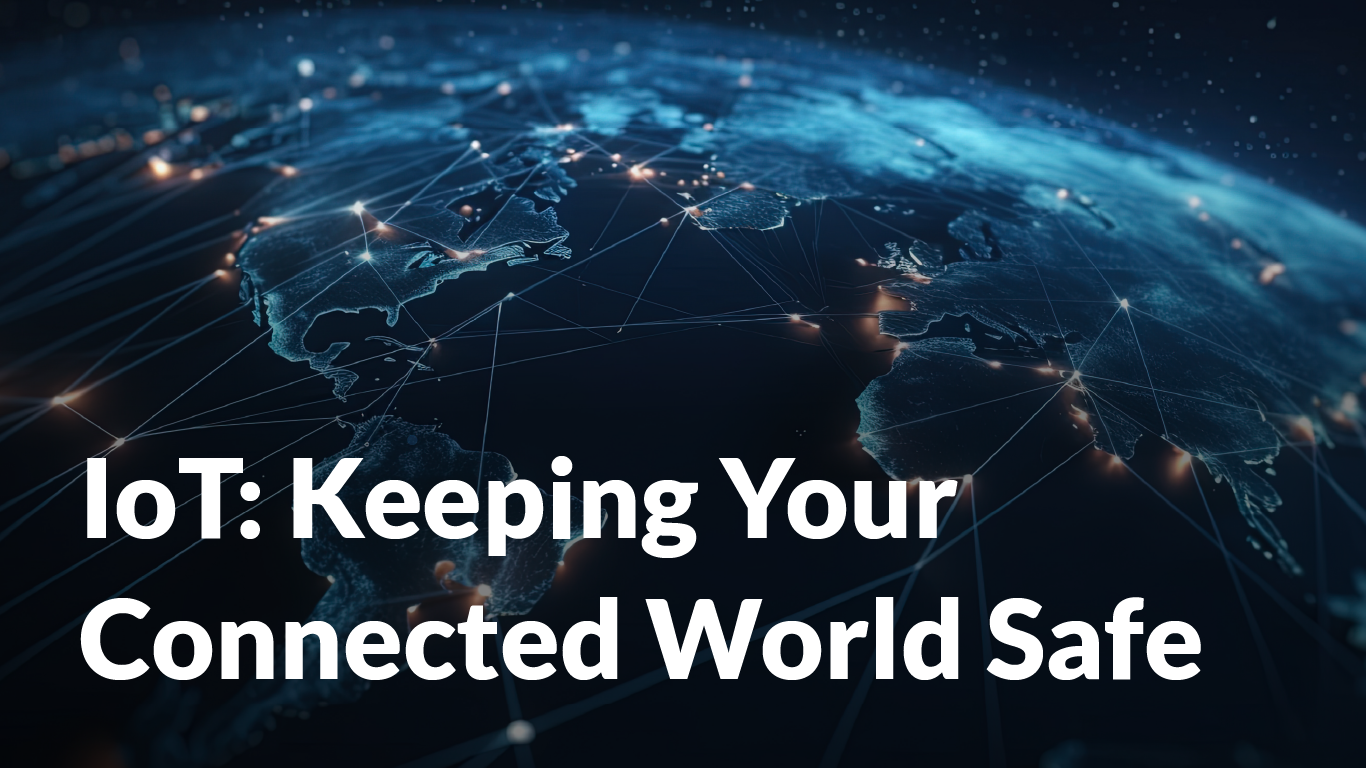You’ve probably heard of IoT, the Internet of Things. It’s everywhere these days, whether it’s mentioned in blogs or on the news. Even if you haven’t paid much attention, chances are you’re already using IoT devices in your daily life.
As internet-based technology continues to spread, IoT has become unavoidable. However, the widespread adoption of these devices also brings new cybersecurity challenges. While we can’t escape the trend towards Wi-Fi-enabled gadgets, we can certainly learn how to use them securely.
Let’s jump right in: What exactly is IoT, and how can we safeguard ourselves against its risks?
Exploring IoT Devices
To put it simply, if a device connects to the internet, it likely falls under the category of IoT. While you might immediately think of computers, phones, or tablets, the scope of IoT is much broader. Think about your smart TV, your connected car, or even your internet-enabled washing machine – these are all examples of IoT devices that are becoming increasingly common in our daily lives. Essentially, if a device has ‘smart’ capabilities and connects online, it’s part of the Internet of Things.
The sheer variety and proliferation of IoT devices are staggering, covering everything from household appliances to industrial equipment. As our reliance on connected devices grows, so does the need to understand and manage the security risks they pose. It’s a rapidly expanding landscape, and staying informed about IoT’s reach and implications is crucial.
Everywhere You Look: The Proliferation of IoT Devices
As technology continues to advance at a rapid pace, IoT connections are expected to reach a staggering 29 billion by 2027. It’s highly likely that you already have several of these devices in your household. Do you use an Alexa, a smart TV, or maybe even a doorbell camera?
While these gadgets certainly enhance convenience – imagine having an app-controlled coffee machine – who wouldn’t appreciate that? – the simultaneous connection of numerous devices to your personal network, often without adequate monitoring, can unexpectedly give rise to security risks that were previously non-existent, akin to weeds pushing through concrete.
How Secure Are IoT Devices?
The significance of cybersecurity is clear. In 2023, the United States allocated an impressive $15.6 billion toward cybersecurity measures, a number expected to rise in future budgets. The arena of cybersecurity remains a dynamic contest, where hackers and security teams perpetually refine their strategies and technologies.
Now, let’s add another layer of complexity: IoT.
As the market floods with more IoT devices, it’s truly the wild west of technology. From network breaches to crypto mining schemes, the array of attacks leveraging IoT vulnerabilities continues to expand. These devices introduce a range of new challenges that undermine traditional cybersecurity defenses.
Here are just a few examples of these IoT vulnerabilities:
- Weak Passwords:Many IoT devices come with default or weak passwords that users often do not change. If these passwords are compromised, hackers can gain access to the entire network, emphasizing the need for robust authentication practices across all devices.
- Shared Network Access:IoT devices often connect directly to private networks. A single breach could potentially allow hackers access to these devices, compromising sensitive data. This highlights the importance of layered cybersecurity measures to protect against such threats.
- Inconsistent Security Standards:The IoT market lacks consistent security standards. Many devices may lack encryption or fail to receive timely security updates, making it easier for hackers to exploit vulnerabilities and access sensitive information.
- Lack of Visibility:With the increasing number of IoT devices in homes and workplaces, it can be challenging to keep track of all connected devices. This makes it difficult to identify potential security gaps and unauthorized devices on the network, posing risks to both personal and corporate data security.
Now let’s take a look at some prominent IoT security breaches to grasp the scale of the issue:
- Mirai Botnet Attack (2016): This attack used compromised IoT devices to launch massive distributed denial-of-service (DDoS) attacks, disrupting internet services globally.
- Verkada Security Camera Hack (2021): Over 150,000 security cameras were breached, exposing sensitive footage from various locations, including Tesla factories and hospitals.
- Bigpanzi Botnet (2015-2023): A cybercriminal group infected millions of Android TV boxes, creating a large botnet for illicit activities.
These incidents underscore the vulnerabilities associated with IoT devices and the critical need for robust security measures to protect against such threats.
Protecting Your IoT Devices Given the potential risks, it’s crucial to implement robust security measures for your IoT devices:
- Device Inventory:Maintain an up-to-date inventory of all devices connected to your network to monitor and manage potential vulnerabilities effectively.
- Physical Security:Ensure physical security for IoT devices, especially in unsecured environments, to prevent tampering and unauthorized access.
- Network Segmentation:Segment your network to isolate IoT devices from critical systems, limiting the impact of any potential breach.
- Feature Management:Disable unused features and services on IoT devices to reduce potential attack surfaces.
- Password Security:Change default passwords immediately and use multi-factor authentication (MFA) wherever possible to strengthen device security.
- Regular Updates:Keep IoT devices updated with the latest firmware and security patches to mitigate known vulnerabilities.
- Wi-Fi Encryption:Enable strong encryption protocols (e.g., WPA3) on your Wi-Fi network to protect data transmitted between devices and your router.
In Conclusion
There are a lot of IoT devices out there – each one a potential vulnerability. As IoT continues to integrate deeper into our daily lives, it’s more important than ever to understand exactly what is being installed into your network. Stay informed, regularly update your security, and work with your IT to keep your IoT secure.
These devices may be smart, but we can be smarter.
Got questions? Or are you just looking to learn more about how to protect your network? t20-company-name] has you covered. Reach out today!




